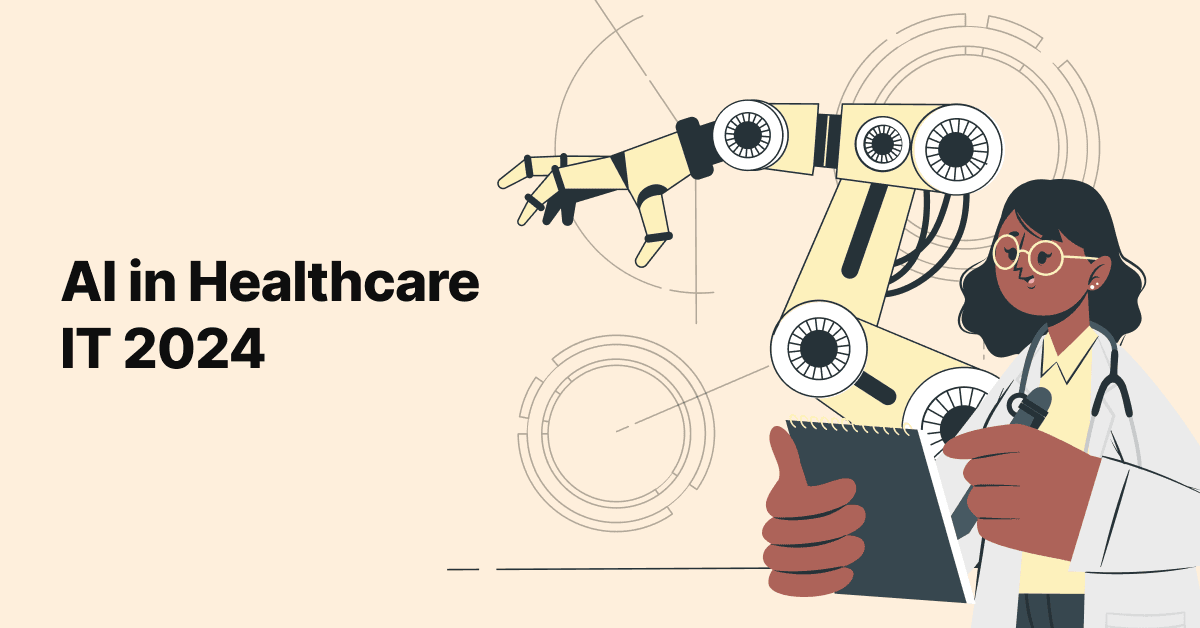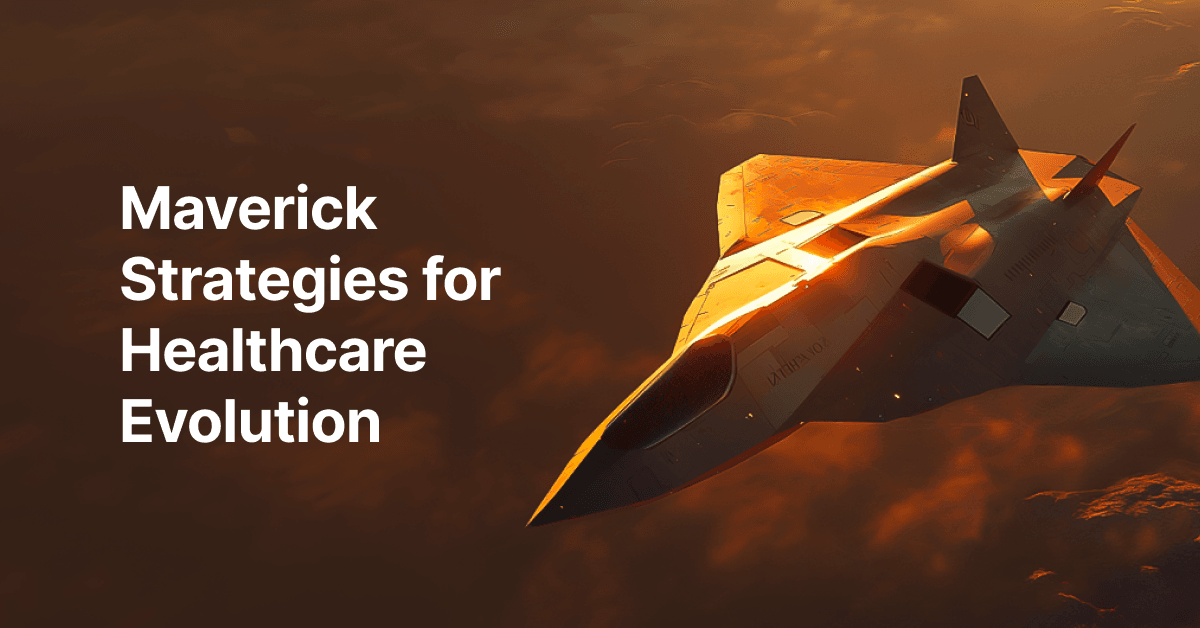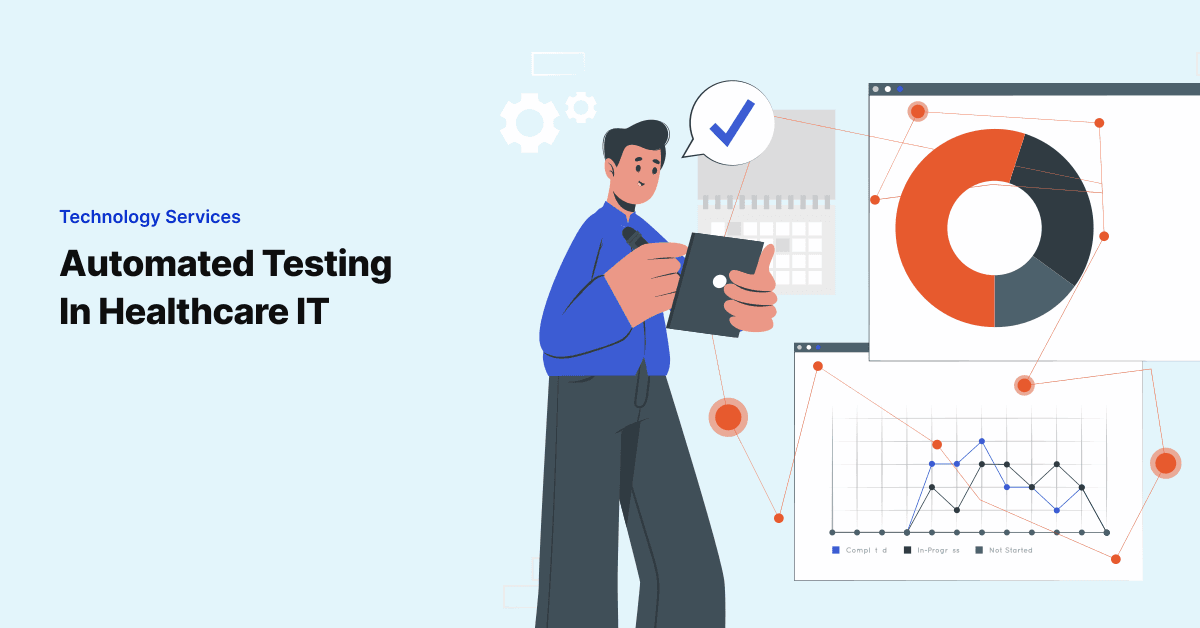
AI in Healthcare IT 2024
Artificial Intelligence (AI) in 2024 has emerged as a beacon of transformation, promising to redefine the …

The healthcare industry is in the midst of a positive shift towards innovation and transformative technologies. Care providers and decision-makers in healthcare facilities are increasingly embracing new technologies, contributing to the progressive evolution of healthcare delivery.
However, to continue the steady progress, the journey will take a concerted effort and the involvement of visionaries who can shape the future of the industry.
Speaking of visionaries, after 36 years, 'Top Gun', one of the most iconic movies, received a sequel in 2022, bringing Captain Pete "Maverick' Mitchell back to the silver screen. The character, known for his visionary thought process and a propensity for pandemonium, was back to doing things he had never done before.
Memorable elements of the movie's plot and the current progress of technology in the healthcare industry appear to go hand in hand. In this blog post, we're exploring the premise.
Let’s face it. The healthcare industry is currently in a transformative phase driven by AI integration and automation. A notable development in this realm is the emergence of co-pilot technologies, aiming to revolutionize healthcare by promoting close collaboration between human healthcare professionals and AI systems.
Co-pilot technologies focus on empowering care providers with better accuracy, speed and reach. Rather than letting the machines take over, the idea is to bestow care providers with new capabilities through AI adoption. Co-pilot technologies are evolving to enable care providers to:
Following the Darkstar mishap, Maverick's old rival (now friend), Admiral Tom 'Iceman' Kazansky, salvages Maverick's future by assigning him to train a fleet of elite pilots for an upcoming mission. The Navy orders a rogue uranium enrichment plant to be destroyed before it goes functional. It lies in an underground bunker at the end of a canyon, protected by Surface Air Missiles (SAMs), GPS jammers and a fleet of fifth-generation fighter jets.
Despite the abundance of technology around them, the Navy's only hope seems to be Maverick and his ability to take risks. He outlines the plan that requires flying very close to the ground to avoid enemy radars, breaching the target with conventional laser-guided bombs and then high tailing it out of the canyon while enduring heavy G-forces during an insane ascent.
This section of the movie highlights the importance of human expertise despite the abundance of technology, much like how care providers continue to be the leaders of healthcare evolution. With the industry's tectonic shift towards patient-centricity, there is an immense need for co-pilot technologies such as AI-powered assistants, Virtual Assistants for patients, Medical Devices enhanced by Internet of Medical Things (IoMT), EHR applications and PACS systems with AI-driven workflows to make documentation streamlined.
As we progress, it is crucial to emphasize healthcare centered around humans, wherein AI functions as a potent tool to assist and enhance the skills and discernment of healthcare professionals.
Creating a strategy differs significantly from putting it into action. The Top Gun cadets and Maverick learn this during the ensuing training following their introduction. Despite their utmost efforts, Top Gun's elite fleet fall significantly short of reaching the enemy target within the planned two-minute timeframe to deploy the bombs accurately.
Following the death of Admiral Kazansky, Maverick is grounded by a reluctant Vice Admiral Beau "Cyclone" Simpson. Motivated by the grief of losing a longtime companion and the anguish of the conclusion of his Navy career, Mavrick engages in a final act of rebellion. He makes an unauthorized flight through the course with stricter parameters. He completes the circuit and hits the target without a wingman, proving the mission is possible.
When assessing the healthcare industry, it becomes evident that it has been comparatively slower than other industries in adopting new technologies. The top three reasons behind the apparent apprehensions are
Introducing new technologies frequently needs more robust supporting evidence, posing a challenge for hospitals to justify investments and gain staff support. A unified approach from all hospital stakeholders is necessary to reduce resistance and address concerns. Their acceptance hinges on recognizing and addressing anxieties and insecurities among patients and professionals.
Moreover, as the distinction between professional health solutions and consumer products, including smartphones, smartwatches, and fitness trackers, diminishes, substantial opportunities exist to integrate familiar and accessible technology.
Hence, the key to fuelling new adoptions lies in overcoming apprehensions and just ‘doing it’, like Maverick did to erase all doubts in this crew and Vice Admiral Simpson.
Despite the Navy's best effort to ground him, Maverick's success and ability to consistently deliver 'the impossible' make him the squadron leader for the mission. Before it begins, he attempts to overcome his regret of losing his close friend and co-pilot 'Goose', a.k.a Lieutenant Nick Bradshaw, 36 years ago.
Goose's death caused Maverick to impede Goose's son, Bradley "Rooster" Bradshaw's career in the Navy, causing a rift between the two. He ends his regret by choosing Rooster as his wingman for the mission.
Trust and confidence are essential for technology adoption in any industry. While the immediate concern for tech investment is usually the return on investment (ROI), more often than not, it takes faith in the technology itself to reap the benefits. Just like Maverick's confidence in Rooster dissolved his apprehension and fear of losing him, and helped him come home, stakeholders' confidence in technology will eventually pave the way for new frontiers in healthcare delivery, patient engagement and population health management.
Join over 3,200 subscribers and keep up-to-date with the latest innovations & best practices in Healthcare IT.

Artificial Intelligence (AI) in 2024 has emerged as a beacon of transformation, promising to redefine the …

Given the sheer complexity of managing patients across the care continuum for a community or population, it’s …

If there was one aspect to healthcare IT integration and implementations that insiders would likely point to …